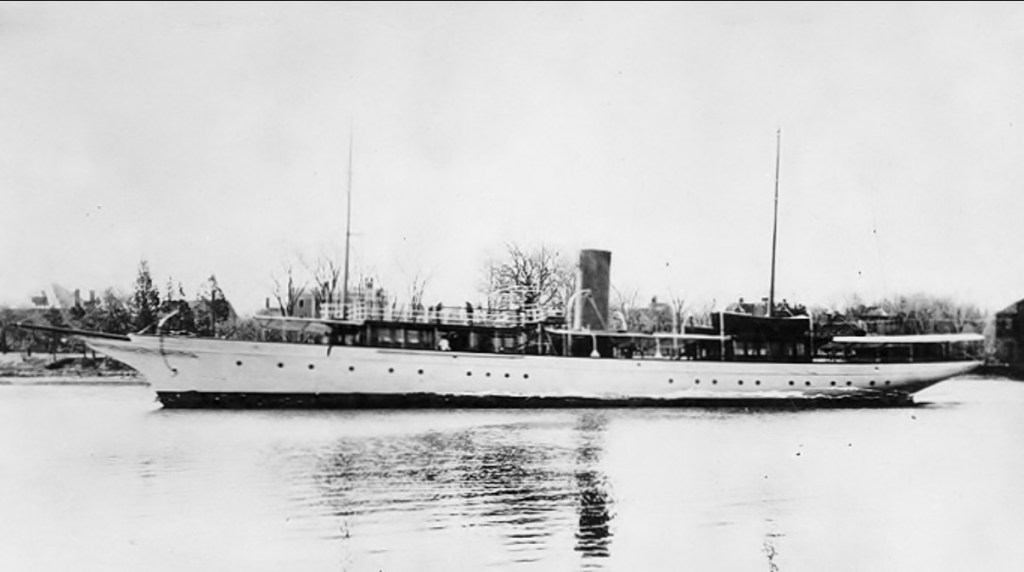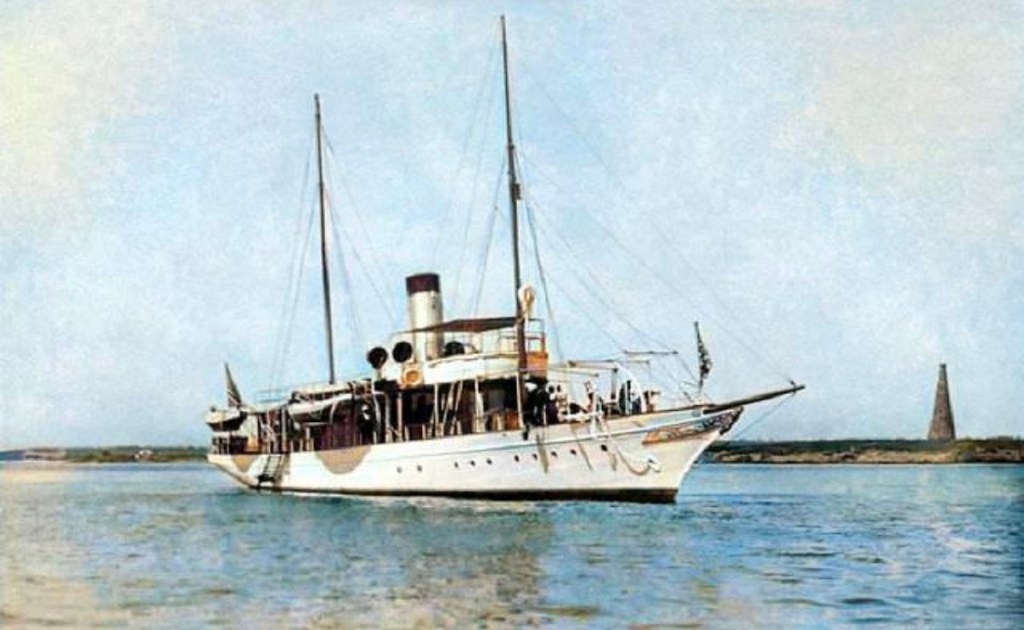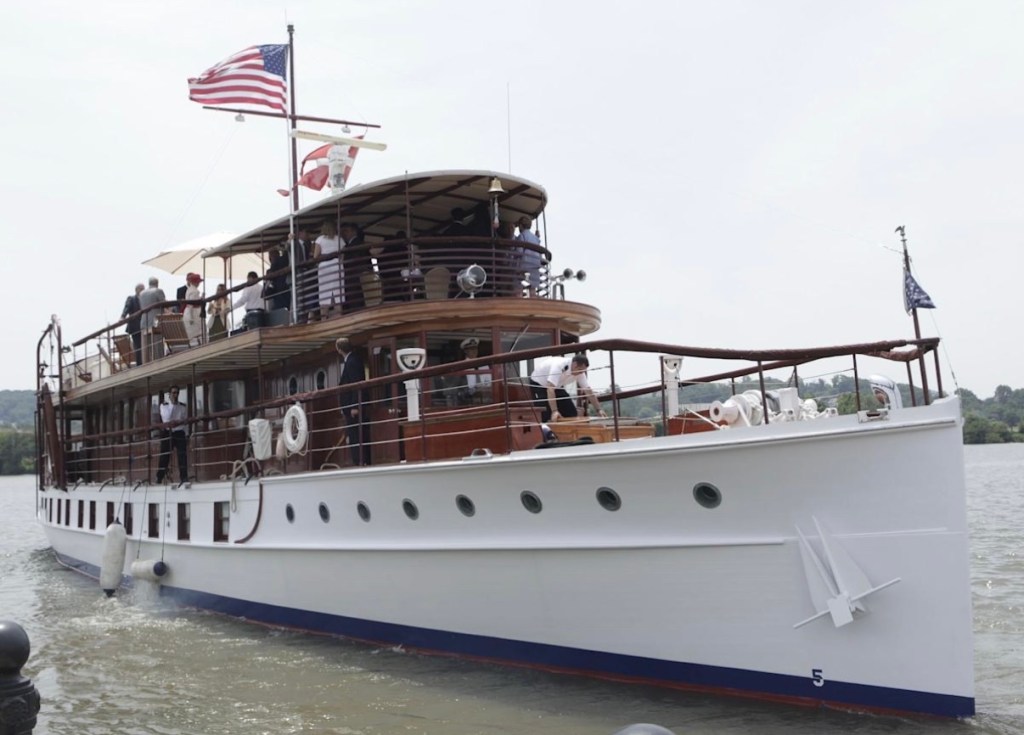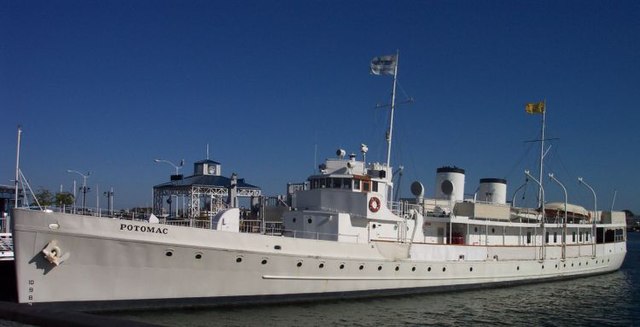Sailing with Power: A History of U.S. Presidential Yachts
Sailing with Power: A History of U.S. Presidential Yachts
Throughout American history, few symbols of presidential privilege have captured the imagination like the presidential yacht. From diplomatic summits to personal retreats, these floating sanctuaries offered U.S. Presidents both prestige and privacy. Though they’ve fallen out of favor in recent decades, their legacy remains rich and fascinating.
1. USS Dispatch (1873–1891) – The First Presidential Yacht:

The tradition began modestly with the Dispatch, used intermittently by Presidents Rutherford B. Hayes and Benjamin Harrison. Originally a Navy vessel, it served mainly for official transportation and ceremonial duties. While not a yacht in the luxurious sense, Dispatch set the precedent.
⸻
2. USS Sylph (1898–1929) – A Step Toward Elegance:

Commissioned under President William McKinley, Sylph marked a shift toward more refined vessels for presidential use. It hosted dignitaries and family outings and was known for its polished interiors and formal functions. Sylph served presidents from McKinley to Hoover.
⸻
3. USS Mayflower (1905–1929) — Theodore Roosevelt’s Favorite:

Perhaps the most famous early presidential yacht, the Mayflower was favored by Theodore Roosevelt. A former luxury steam yacht converted for military use during the Spanish-American War, it became a floating White House. Roosevelt used it for diplomatic affairs—most notably, during the negotiations of the 1905 Treaty of Portsmouth, which earned him the Nobel Peace Prize.
Presidents Taft, Wilson, Harding, and Coolidge also used the Mayflower, which became a regular site for state events until it was retired during Herbert Hoover’s administration to cut costs during the Great Depression.
⸻
4. USS Sequoia (1929–1977) – The Icon of Presidential Yachting:

No vessel has better embodied presidential seafaring than the Sequoia. Purchased in 1931, this 104-foot wooden yacht became a beloved venue for every president from Herbert Hoover through Jimmy Carter. Highlights include:
• Franklin D. Roosevelt used it for wartime strategy discussions.
• John F. Kennedy celebrated birthdays aboard with Jackie and entertained foreign dignitaries.
• Lyndon B. Johnson twisted arms for civil rights legislation over scotch and cigars on deck.
• Richard Nixon reportedly played the piano and made the decision to resign while on the Sequoia.
In 1977, President Carter, aiming to project fiscal responsibility, sold the Sequoia, ending the era of presidential yachts.
⸻
5. USS Potomac (1936–1945) – FDR’s “Floating White House”:

While Sequoia was in use, Franklin D. Roosevelt also had the Potomac, a former Coast Guard cutter. He used it extensively during his presidency, especially because it could accommodate his wheelchair with more ease. Notable guests included King George VI and Queen Elizabeth of England in 1939—the first British royals to visit the U.S.
Now permanently docked in Oakland, California, the Potomac operates as a museum ship.
⸻
6. The Post-Yacht Era (1977–Present): Modern Alternatives:
After Carter sold the Sequoia, no official presidential yacht has taken its place. Modern presidents prefer secure aircraft or motorcades, and with increased media scrutiny, maintaining a presidential yacht is seen as politically risky.
However, presidents have still enjoyed time on the water:
• George H.W. Bush, an avid yachtsman, often sailed his own boat off the coast of Maine.
• Barack Obama vacationed in Hawaii and Martha’s Vineyard but avoided optics of personal luxury boats.
• Joe Biden, while not a yachtsman, has spoken nostalgically about time on the water in his youth in Delaware.
⸻
Where Are They Now?
• USS Sequoia: After decades of private ownership and a long legal battle, it’s now undergoing a multi-million-dollar restoration in Maine with hopes to return her to Washington, D.C.
• USS Potomac: Open to the public in Oakland, CA, as “The Floating White House.”
• USS Mayflower: Decommissioned and eventually scrapped.
• USS Sylph and Dispatch: Lost to history but not forgotten.
Floating Legacies:
Presidential yachts were never just pleasure boats—they were stages for diplomacy, sanctuaries for reflection, and tools of soft power. While the golden age of presidential yachting may be over, these vessels remain a vivid reminder of how even presidents need a moment at sea.